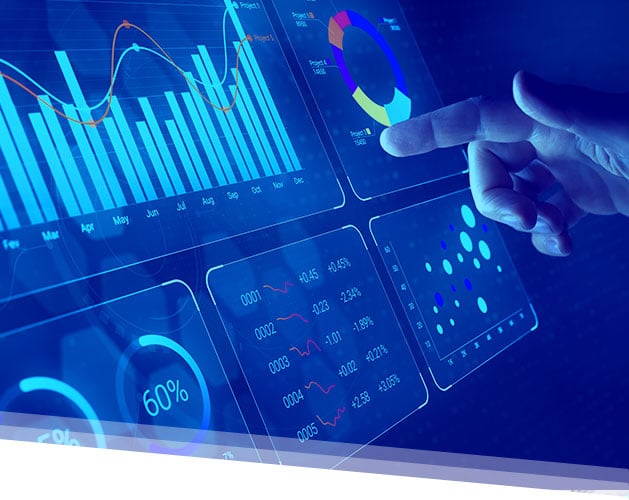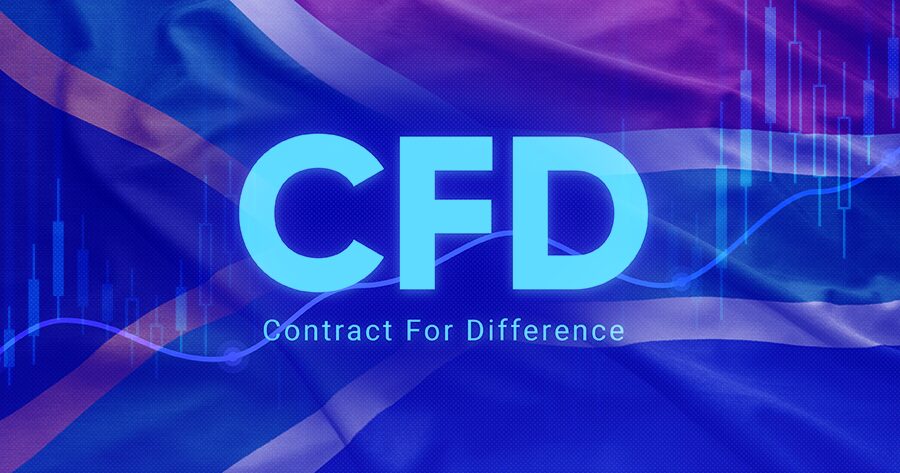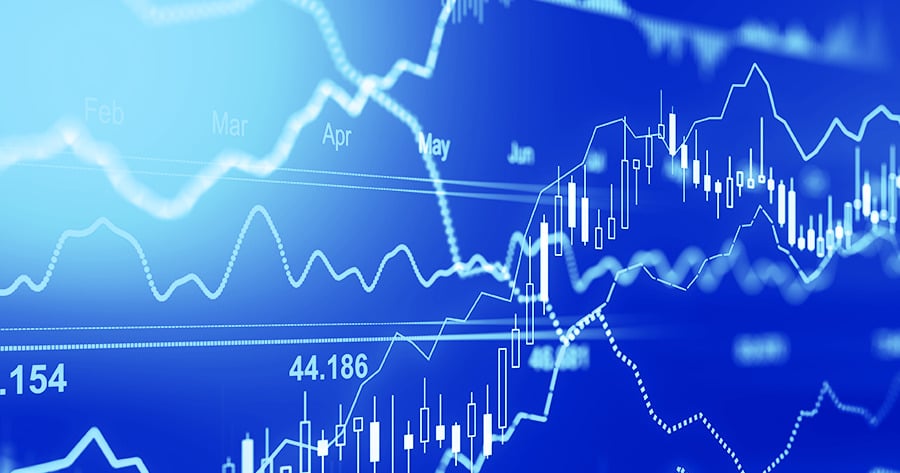CFD trading: a beginners guide
Right, you hear “trade oil CFD” all the time. If you are a complete beginner, you might wonder: “What do they mean?” I assure you that they don’t actually mean buying a barrel and selling it to your neighborhood or to your community market. Oil can be traded in CFDs (contracts for difference), which are derivative financial instruments. CFDs enable traders to profit from the price movement of an asset, without ever owning it physically.
What does this mean for you?
Easy access to the markets. Do you regret not investing in Amazon or Google? Never regret again, because you can have your pie of the global markets simply with CFDS.
What are CFDS again?
To give you a quick rundown, a CFD is an agreement or otherwise contract between you and a broker that allows you to speculate on the rises and falls of financial assets like forex pairs, indices, and stocks. Your profit or loss is determined by the difference between the buying and selling prices of each contract.
But before you jump in, there are a few essential steps to understand the markets better:
- Choose a reliable CFD broker that suits your needs.
- Practice using a free demo account to get familiar with the process.
- Learn how to interpret real-time graphs and use trading tools effectively.
- Consider the fundamental factors that impact the markets.
- Understand leverage and margins before you start with real-money trades.
Essential CFD Trading Terms for Beginners
Make them your second nature
Before you jump into CFD trading, it’s crucial to familiarize yourself with the basic terminology used by traders and brokers. These terms will help you make sense of CFD trading:
Leverage and Margin
When you trade CFDs with leverage, you only pay a portion of the full price of the asset, known as the margin, while the broker lends you the rest. Leverage is applicable to other trading instruments as well, but CFDs are especially appealing due to their low margin requirements.
For beginners in CFD trading, leverage and margin might appear confusing, but they essentially involve opening positions larger than what you can afford with your capital. Margin is usually expressed as a percentage (e.g., 5%), while leverage is presented as a ratio (e.g., 1:20). For instance, if a Tesla share costs $200, and your broker offers a CFD with a 5% margin, you’ll need to pay $10 per share. Similarly, with 1:20 leverage, you only need to pay one-twentieth of the full price, which is also $10 (200 divided by 20).
It’s essential to recognize that margin (or leverage) can be your take-it-big or leave-it-all, amplifying both your profits and losses. Demo accounts are your go-to tool for preparing and gaining a practical understanding of terms like leverage and margin in action. By using a demo account, you can practice trading with virtual money, allowing you to explore the effects of different leverage ratios and margin percentages without risking your real funds. This hands-on experience can significantly enhance your comprehension and confidence when you start trading with real money.
Spreads-CMT’s are tight
Trading spread, oh yes, it’s an essential piece of the trading puzzle! Picture this: when you want to buy or sell a financial asset like a stock or currency pair, there’s a tiny gap between the buying price and the selling price. That gap is the trading spread! It’s like a little fee you pay to the broker, but it’s crucial for your trades.
Now, here comes the excitement: there are two types of spreads in the trading world! You’ve got the fixed spreads, where the difference between buying and selling remains steady. But wait, there’s more! Enter the variable spreads, where the difference can change, getting narrower or wider depending on how the market is feeling.
And guess what? The spread is measured in pips, those tiny little price movements that make all the difference. So, understanding the spread and how it affects your trades can be a game-changer! It’s like mastering the secret code to the cost of trading. Get ready to conquer the markets armed with this exciting spread knowledge!
Tell me again: What is a pip?
Only for currency trading
A special unit of measurement called a “pip” to express the change in value between two currencies. When the EUR/USD pair, for instance, moves from 1.1050 to 1.1051, that tiny rise of 0.0001 USD in value is equal to ONE PIP. Usually, pips represent the last decimal place of a price quote. Most currency pairs go up to 4 decimal places, but there are exceptions, like Japanese yen pairs, which go up to two decimal places. For EUR/USD, one pip is 0.0001, while for USD/JPY, it’s 0.01. Keep an eye on those pips, as they play a significant role in currency trading!
Lots:
In the world of trading, a “lot” is a standardized unit used to measure the size of a transaction. It represents the quantity of a financial asset you are buying or selling in a single trade. The size of a lot can vary depending on the type of asset being traded and the broker’s specifications.
In the forex market, a standard lot is typically equivalent to 100,000 units of the base currency. For example, if you’re trading the EUR/USD currency pair, one standard lot would be 100,000 euros. However, there are also smaller lot sizes available, such as a mini lot (10,000 units) or a micro lot (1,000 units), which allow traders to participate with lower capital.
In other markets, like stocks or commodities, lot sizes may vary depending on the asset’s value and the exchange requirements.
Understanding lot sizes is crucial because it directly affects the risk and potential profit of a trade. Larger lot sizes can lead to higher gains or losses, while smaller lots provide more flexibility for traders with limited capital.
The markets are your oyster:
- Stocks: Trade CFDs on individual company stocks, like Apple, Google, or Microsoft, and benefit from price fluctuations without actually buying the shares.
- Forex: Access the foreign exchange market by trading currency pairs like EUR/USD or GBP/JPY, profiting from changes in exchange rates.
- Commodities: Trade CFDs on commodities such as gold, oil, silver, or wheat, capitalizing on the price movements of these raw materials.
- Indices: Speculate on the performance of stock market indices like the S&P 500, FTSE 100, or DAX, representing a basket of top-performing companies in a specific region.
- Cryptocurrencies: Trade CFDs on popular cryptocurrencies like Bitcoin, Ethereum, or Ripple, benefiting from their price fluctuations without owning the digital assets.
The platforms: MetaTrader 4 (MT4) and MetaTrader 5 (MT5)
Your gateway to the financial markets, available on both PC and mobile devices.
With MT4 and MT5, you have the power to analyze, strategize, and execute trades at lightning speed. No more missing out on market opportunities – the mobile trading feature keeps you in the game, allowing you to seize the moment, even on the move.
For the enthusiasts of in-depth analysis and multiple screens, PC trading is your ultimate playground. Dive into the exciting world of charts, technical indicators, and expert advisors, making informed decisions at every turn.
And that’s not all! With cross-device synchronization, your trading journey remains seamless. Stay connected and in control 24/5, switching effortlessly between PC and mobile trading. No matter where you are, these platforms keep your account data and settings up to date, ready for action anytime, anywhere.
The strategies- to pump up your profits
- Timing and Market Watching: Sharpen your skills in tracking market movements to seize opportunities. Analyze trends and make well-informed decisions to maximize your trading potential.
- Economic News and Releases: Stay informed about major economic events to take advantage of market swings. Quick reactions during these moments can lead to profitable opportunities, but remember to manage risk wisely.
- Long-Term Trading: Embrace patience and resilience for a rewarding journey. Invest in strong fundamentals and watch your trades grow steadily over time, offering potential for impressive returns in the future.
- Scalping: Experience fast-paced action with quick trades. Capture small price movements for swift profits and enjoy the thrill of active trading.
- Patience and Education: Build a solid foundation for success. Invest in learning and discipline, recognizing that trading is a gradual process. With steady progress, you’ll gain the confidence to navigate the markets effectively.
Types of orders- Yes, there is more than one
- Open Trade: This is the initial position you take when you enter the market. When you open a trade, you’re either “buying” (going long) or “selling” (going short) a financial asset, like a currency pair or a stock.
- Take Profit: Take Profit (TP) is a crucial tool used to lock in profits and automatically close a trade when it reaches a pre-defined target price. By setting a Take Profit level, you ensure that your trade is closed automatically when the market moves in your favor, securing your gains.
- Stop Loss: Stop Loss (SL) is a risk management tool that acts as a safety net for your trades. It allows you to set a predetermined level at which your trade will be closed to limit potential losses. By using a Stop Loss, you protect your capital from significant downturns in the market and avoid excessive losses.
- Trailing Stop: The Trailing Stop is a dynamic form of Stop Loss that adjusts as the market moves in your favor. It follows the price direction but maintains a certain distance (specified in pips or points) from the current market price. This allows you to secure profits as the trade progresses, while still giving it room to grow if the market continues to move in your favor.
- Limit Order: A Limit Order is a pending order to buy or sell an asset at a specific price or better. If the market reaches the desired price, the Limit Order is executed, allowing you to enter or exit a trade at the price level you want, even if you are not actively monitoring the market.
- Market Order: A Market Order is an order to buy or sell an asset at the current market price. It is executed immediately at the best available price, ensuring your trade is filled promptly.
How to trade CFDs?
With these thrilling steps, you’ll be well on your way to mastering the art of CFD trading and navigating the markets like a pro (in the long run at least).
- Select the symbol/asset or currency pair you wish to trade. In forex trading, the most traded currency pairs, which are the ones who move the most and therefore considered the most profitable are the EUR/USD, GBP/USD, AUD/USD, NZD/USD, USD/JPY, USD/CHF and USD/CAD.
- Then you need to select the volume of your trade. Forex brokers offer standard lots which are the equivalent of 100.000 units of a currency down to micro lots or 1000 units.
- Choose a stop loss and take profit target. These optional parameters are critical both in terms of protecting your account from unnecessary losses and guaranteeing some profit in case the market moves against you unexpectedly. As soon as the asset’s price hits any of your predetermined targets, the trade will be closed, and your account balance will reflect any profits or losses incurred.
- Select Buy or Sell depending on the direction you believe the market will move towards. For example, if you are trading the EUR/USD and you believe the euro will start increasing in value, you would buy – otherwise you should sell in order to profit from the downwards movement.
- Close the trade at any time manually to realize any potential profit or wait for your stop loss or take profit orders to be activated automatically.
Are you going really ask why trade?
Ok! Trading is an exciting opportunity to unlock your financial potential and immerse yourself in the global markets. It’s a journey filled with challenges and rewards, where every move can lead to success. Whether you’re driven by financial goals, the excitement of the markets, or a desire to explore new horizons, trading offers a dynamic and engaging experience.
Choosing your broker is like choosing your armour
To ensure a safe and trustworthy trading experience, always opt for a licensed and regulated broker. With CMtrading operating under the strict regulations of FSCA and FSA, you can trade with confidence, knowing that your investments are in capable hands.
Time for real market action:
Open an account today with CMTrading so you can trade even on the move or while watching your child playing at the park. CMtrading is created by traders for traders so we won’t let you be on your own! We offer daily market analysis, weekly webinars and email alerts about how the market moves. Download our app now! Hey, it is so beginner friendly!







